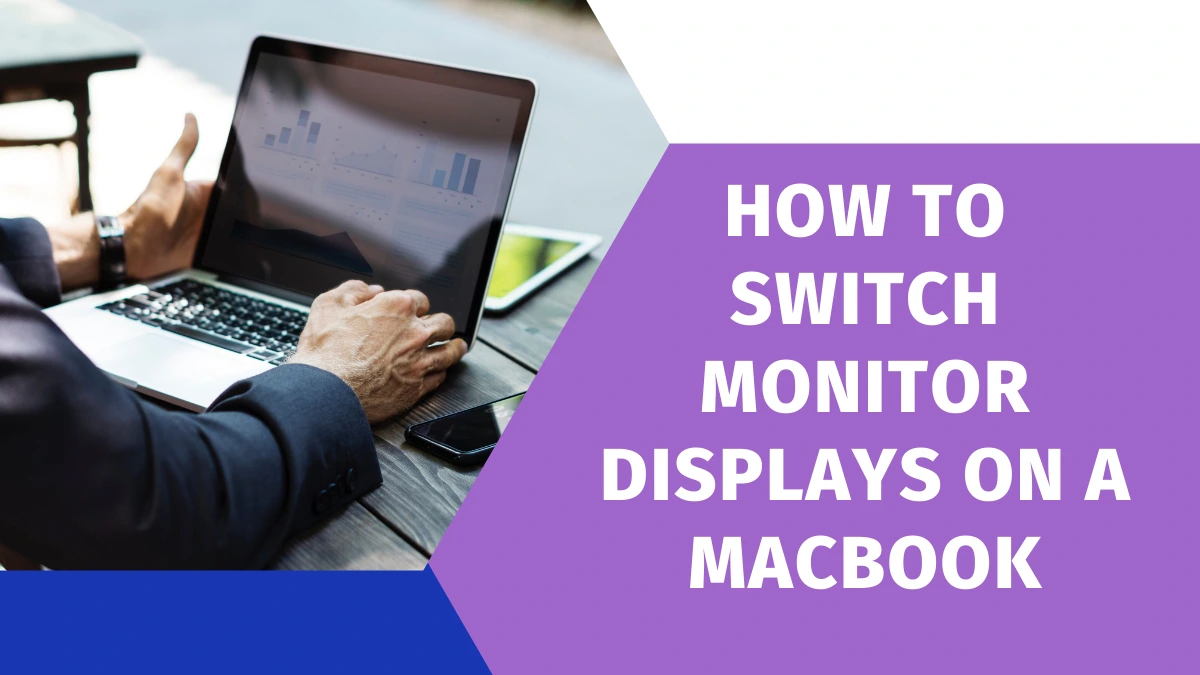Switching monitor displays on a MacBook allows for a flexible and efficient work setup, especially when using multiple screens. Whether connecting an external monitor for presentations, multitasking, or simply expanding your workspace, mastering this process ensures smooth transitions between displays. This guide will walk you through the steps to effortlessly switch monitor displays on your MacBook, empowering you to optimize your workflow and enhance productivity
1. Connect your external monitor to your MacBook using the appropriate cable (such as HDMI, DisplayPort, or USB-C).
2. Go to the Apple menu () in the top-left corner of your screen.

3. Select “System Preferences.”


5. In the Displays preferences window, you’ll see two tabs: “Display” and “Arrange.”
6. In the Display tab, you can adjust the resolution and other settings for each display.
7. In the Arrangement tab, you’ll see a representation of your displays. You can drag the displays to rearrange them according to your preference.
8. To switch the main display (the one with the menu bar), simply drag the white menu bar from one display to the other in the Arrangement tab.
That’s it! Your monitor display should now be switched on your MacBook.
What if my MacBook doesn’t detect the external display?
If your MacBook isn’t detecting the external display, here are some troubleshooting steps you can try:
- Check Connections:
- Ensure the cable is securely connected to both your MacBook and the external monitor.
- Try using a different cable or adapter if available.
- Detect Displays Manually:
- Go to System Settings (or System Preferences on older macOS versions).
- Click on Displays.
- Press and hold the Option key to make the Detect Displays button appear, then click it.
- Restart Your MacBook:
- Sometimes a simple restart can resolve detection issues.
- Update macOS:
- Make sure your MacBook is running the latest version of macOS. Go to System Settings > Software Update to check for updates.
- Reset NVRAM/PRAM:
- Shut down your MacBook.
- Turn it on and immediately press and hold Option + Command + P + R for about 20 seconds. This resets the NVRAM/PRAM, which can sometimes fix display issues.
- Check Display Settings:
- Ensure that the display settings are configured correctly. Go to System Settings > Displays and make sure the external monitor is set up properly.
- Test with Another Monitor:
- If possible, try connecting a different monitor to see if the issue is with the monitor or the MacBook.
If none of these steps work, there might be a hardware issue with your MacBook or the external monitor. In that case, contacting Apple Support or visiting an Apple Store might be necessary.
What if the external display shows a black screen?
If your external display shows a black screen, here are some steps you can take to troubleshoot the issue:
- Check Connections:
- Ensure that all cables are securely connected to both your MacBook and the external monitor.
- Try using a different cable or adapter if available.
- Detect Displays Manually:
- Go to System Settings (or System Preferences on older macOS versions).
- Click on Displays.
- Press and hold the Option key to make the Detect Displays button appear, then click it.
- Adjust Display Settings:
- Make sure the external display’s brightness hasn’t been turned down.
- Check the resolution and refresh rate settings. Sometimes, setting a resolution or refresh rate that the monitor doesn’t support can cause it to go black.
- Restart Your MacBook:
- Restarting can often resolve display issues.
- Update macOS:
- Ensure your MacBook is running the latest version of macOS. Go to System Settings > Software Update to check for updates.
- Reset NVRAM/PRAM:
- Shut down your MacBook.
- Turn it on and immediately press and hold Option + Command + P + R for about 20 seconds. This resets the NVRAM/PRAM, which can sometimes fix display issues.
- Check for Hardware Issues:
- If possible, test the external monitor with another device to see if it works.
- Try connecting a different monitor to your MacBook to determine if the issue is with the monitor or the MacBook.
If these steps don’t resolve the issue, there might be a hardware problem with your MacBook or the external monitor. In that case, contacting Apple Support or visiting an Apple Store might be necessary.
Read More
https://blogzwave.com/how-to-connect-your-macbook-to-a-domain/
Important: The information provided here in the post is for general informational purposes only. It should not be taken as professional or any other type of advice. Always seek the advice of a qualified professional before implementing this information on your own. Thank you!
Add Blogzwave To Your Google News Feed

